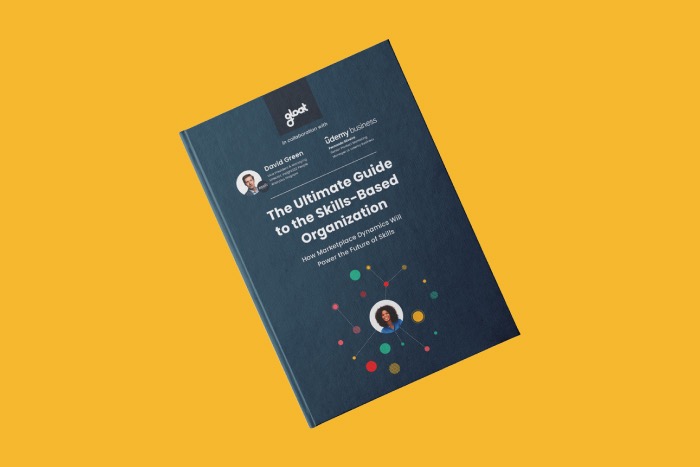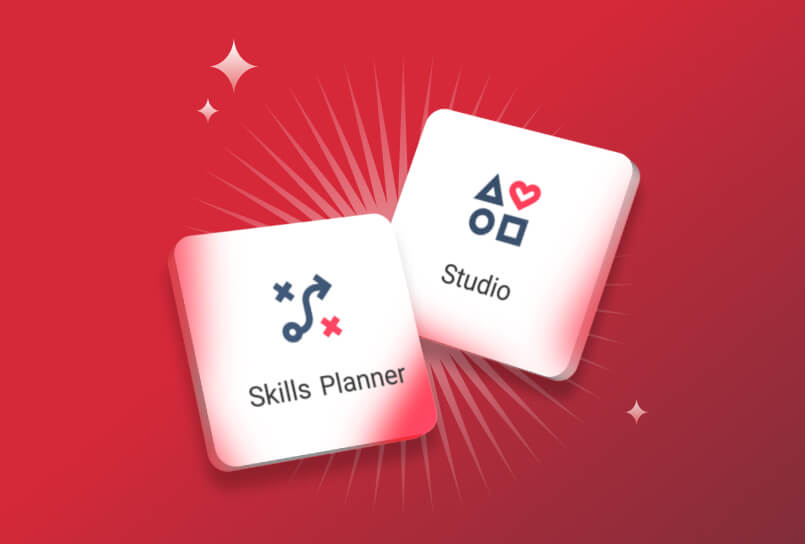Skills-based organization: What is it & how to become one
Why skills need to be at the center of your HR strategy The bar is high for 21st-century organizations. Businesses need to respond to disruption nearly instantaneously, and the pace of change is only getting faster. To stay ahead, we’re seeing work get unboxed from jobs and deconstructed into smaller pieces as workforce pixelation gains

Why skills need to be at the center of your HR strategy
The bar is high for 21st-century organizations. Businesses need to respond to disruption nearly instantaneously, and the pace of change is only getting faster. To stay ahead, we’re seeing work get unboxed from jobs and deconstructed into smaller pieces as workforce pixelation gains momentum.
These changes are part of a much larger shift. Leaders recognize that agility is a requirement to thrive in their next chapter and that skills fuel agile enterprises. As a result, the concept of skills-based organizations is now dominating talent management discussions.
But while the idea of a skills-based organization may be the newest workplace buzzword, what does it take to put skills at the center of your strategy? And what frameworks and tools do leaders need to embrace for their businesses to successfully shift to a skills-based approach?
What is a skill-based organization?
A skills-based organization describes a company that breaks down work into projects, tasks, and gigs and deploys employees to open opportunities based on their capabilities and experiences.
Skills-based organizations move away from traditional job-dominant operating models and instead encourage their workforces to put their skills to use across the entire enterprise, in turn unlocking capacity and maximizing productivity.
This approach enables skills-based organizations to achieve greater agility because they can pivot and reallocate talent quickly to respond to changes in real time. However, while unboxing work from jobs is a massive leap forward, there’s still room–and a crucial need–to take skills-based approaches one step further.
The most innovative enterprises recognize that work isn’t only rooted in their workforce’s skills and capabilities. Dynamic factors such as reshuffling valuable skills combinations, evolving employee interests and ambitions, and changes in business needs must be taken into account when designing skilling strategies.
5 characteristics of a skills-based organization
Most skills-based organizations share the following 5 defining characteristics:
#1. Skills-centric culture
Skills-based organizations don’t just view skills as a unit of work, but instead treat skills-centricity as a key pillar of their organizational culture. Employees at skills-based organizations are empowered to hone new capabilities by participating in projects and gigs and managers continuously encourage their direct reports to expand their horizons and lend a helping hand to other teams.
#2. A sophisticated skills data infrastructure
Skills-based organizations harness the power of AI to manage data and definitions around skills as well as proficiency levels and job descriptions. The best skills intelligence tools can harmonize skills data from any source to create a single source of truth for workforce capabilities that leaders across the organization can tap into.
#3. Dynamic work structures
Rather than sticking to a strict job hierarchy, skills-based organizations are flatter and prioritize networked teams of employees who possess the capabilities needed for the specific project they are working on. Cross-functional collaboration is commonplace and workers of all seniority levels are empowered to move into new projects based on emerging business priorities.
#4. Agility and adaptability
Skills-based organizations continuously shape shift to meet the challenges their organization is facing. No employee is boxed into a certain role but instead empowered to expand their horizons and continuously hone new skills. Leaders harness skills intelligence tools to learn how to reallocate and redeploy people to open opportunities based on the skills they have and the competencies that a given project requires.
#5. Emphasis on talent development
Leaders at skills-based organizations demonstrate an ongoing commitment to helping employees hone new skills. Rather than viewing learning and development as episodic or ad-hoc, skill-building opportunities are continuous and ever-evolving to equip employees with the competencies their business demands.
Benefits of skills-based organizations
Skills-based organizations set aside traditional operating models and “tried-and-true” strategies and begin to reimagine work and workforces. As a result, they benefit from three game-changing advantages:
Greater agility
Skills-based organizations recognize the constant supply and demand changes fueling the skills imperative. On the demand side, businesses need dynamic workforces that can build skills quickly. And from a supply perspective, employees have more choices than ever before. By understanding how marketplace dynamics come into play, these organizations can pivot and respond to change in record-breaking times.
Fewer silos
There’s no such thing as a rigid hierarchy in a skills-based organization. Instead, talent flows freely across the enterprise, in turn powering more frequent cross-functional communication and preventing key knowledge from staying trapped within a specific team or department.
Better productivity
When work is unboxed from jobs, talent can be reallocated to ensure employees’ skills are being put to use across their entire organization. Thus, skills-based organizations unlock their workforce’s full capacity because employees are encouraged to contribute to projects owned by various departments.
4 steps to become a skills-based organization
Given the multitude of competitive advantages, it’s easy to understand why businesses are striving to become skills-based organizations. Here are four steps to get started:
#1. Prioritize experiential learning
In an ever-changing world like ours, employees need the opportunity to constantly and dynamically build new skills. L&D content is a strong foundation for upskilling and reskilling, but it must be paired with hands-on learning experiences like projects, gigs, and mentoring for maximal impact. By aligning employees to roles based on skills, interests, and future ambitions, talent marketplaces can power experiential learning for dynamic skills-based organizations.
#2. Take advantage of talent marketplaces
Once skills-based organizations deconstruct work into smaller pieces, they need a mechanism that enables these segments to move and organize fluidly. This is where a platform like a talent marketplace comes into play. The technology matches employees to projects, gigs, and mentorships based on their skills, ambitions, and capacity.
#3. Get a bird’s eye view of shifting skill needs
Many leaders look at skills as an inventory challenge. They think they just need to build up a certain amount of competency in a given field to ensure their organization is equipped for the future. But this inventory mindset won’t work in our dynamic world. Instead, leaders must anticipate how employees’ skills and business needs will shift over time.
To gain insight into the evolving nature of workforce capabilities, leaders are looking to a new generation of AI-powered skills intelligence tools. These systems give executives a comprehensive view of the capabilities their people have that’s updated in real-time, in addition to forecasting the competencies that are likely to grow in importance and the capabilities that can be de-prioritized based on third-party data and market insights.
#4. Update the employee lifecycle
Additionally, skill-based organizations need to start viewing the employee lifecycle differently. Instead of looking at a worker’s journey as “attract, develop, retain”, dynamic businesses view it as “access, grow, connect”. Throughout each stage of this new lifecycle, the focus has shifted from merely acquiring and developing talent to gaining skills visibility and promoting talent mobility.
As stakes and expectations rise in the new world of work, only dynamic skills-based organizations will be able to unlock the agility needed to keep up with the rapid pace of change. If you’re looking to learn more about what it takes to put skills at the center of your strategy, download our ebook: The ultimate guide to the skills-based organization.





